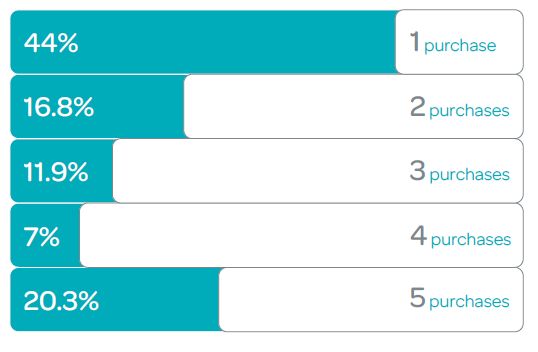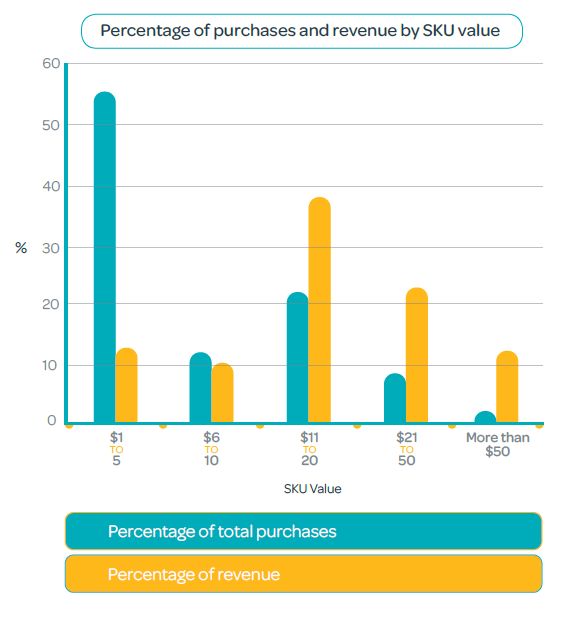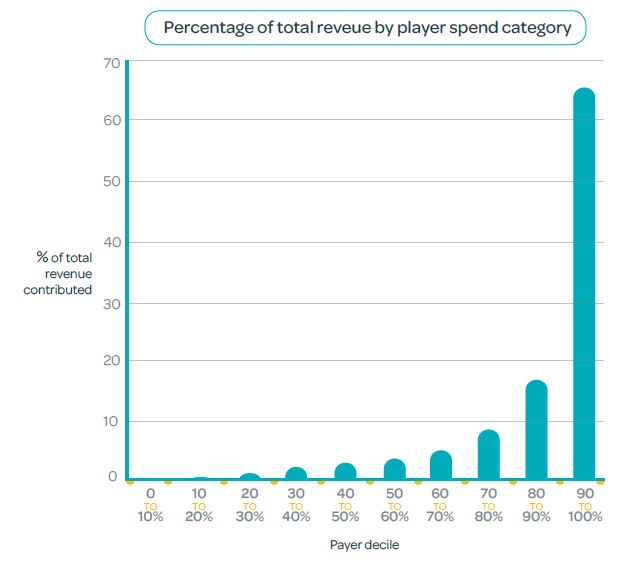Mobile marketing automation firm Swrve released a report on monetization for mobile games, and the numbers are fascinating. Swrve’s data is drawn from over 200 freemium games and tens of millions of players, and the figures are based on a the month of January 2015. The key statistic is that only 2.3 percent of the players made a purchase in the month — but that’s a sharp improvement over the same survey done in January 2014, which found only 1.5 percent of players making a payment in the month.

The report didn’t consider advertising revenue, which is a major source of revenue for many games. Still, it’s clear that the vast majority of mobile game players don’t pay any money to play. How much is being spent The average spend was $29.17 per game surveyed (based on the paying players), which is up from $22 last year. So publishers seem to be getting significantly better at motivating players to pay, though the numbers are still small.
The report noted that while purchases between $0 and $5 represent over 55 percent of all purchases, they now contribute just 13.4 percent of overall revenue (less than half of the 27 percent they represented last year). While the high-value (over $50) purchases are 14 percent of revenues, it’s the mid-range of purchases that has seen a significant change. Last year, purchases between $11 and $20 were 8 percent of all purchases, accounting for just over 22 percent of revenues. This year, items priced in that range are 21.9 percent of all purchases and account for 38.6 percent of revenues. Swrve’s conclusion is that “the $10-$20 SKU is now the true revenue driver in mobile free-to-play games.”

Perhaps the most interesting fact revealed by Swrve’s study is the importance of whales. “A full 64 percent of revenue now derives from the top 10% of payers,” noted the report. “To add further context, if we express that group as a percentage of total players they represent a mere .023 percent of that group. In other words, 64 percent of all revenues come from a mere 0.2 percent of all players!”
Swrve also looked at how long someone would typically play a game before making a purchase, finding that the average time to purchase is 15 hours, significantly less than the 28 hours reported the previous year. “Players are making purchases faster than ever before,” Swrve said.

The full report is definitely worth a read if you’re trying to figure out what to expect from monetizing a game, what sort of prices to charge, and who are the important players. No doubt the implications will be thoroughly debated, but one thing is clear — the mobile game market continues to change. There’s a vast opportunity inherent in the 97.7 percent of mobile game players who never spend any money. The company who can unlock that, even a little bit, with clever game design, monetization, or marketing will be very successful indeed.

